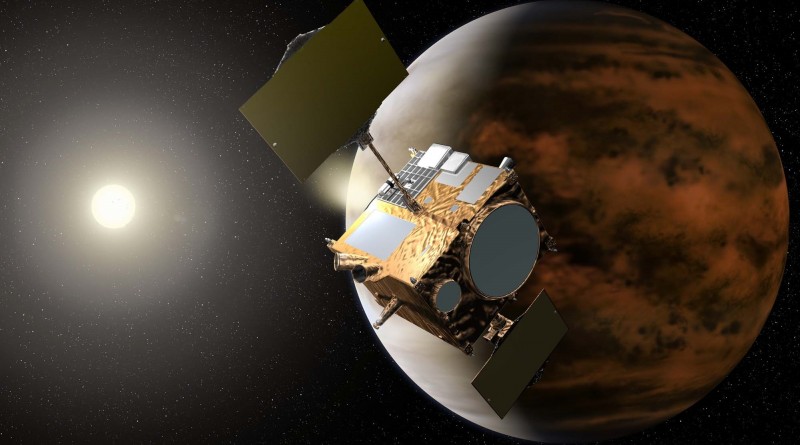Akatsuki Venus Orbiter loses Infrared Vision after Electrical Fault
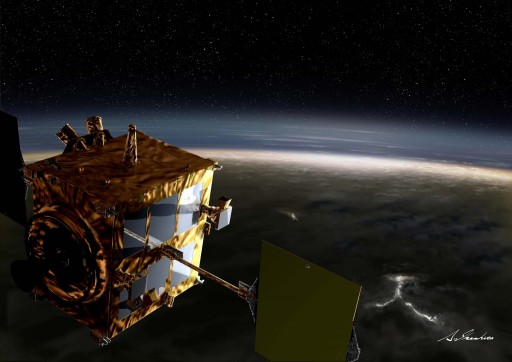
Japan’s Akatsuki spacecraft in orbit around Venus has suspended operating two of its five scientific cameras after the craft’s electronics units showed considerable degradation in December, just one year after the mission’s arrival at Venus following an extended odyssey through the solar system.
Akatsuki, launched in May 2010, was inbound for orbital insertion around Venus in December 2010 when its main engine cut out early and left the probe stranded in solar orbit. The Japan Aerospace Exploration Agency was successful in developing a plan to salvage the mission by having the craft tweak its orbit around the sun and approach Venus for another try at orbital insertion in December 2015, relying on the craft’s attitude control thrusters that had never been intended for such a propulsive maneuver.
Akatsuki was successful in reaching a highly elliptical orbit around Venus and, in March 2016, adjusted its orbit to circle Venus once every nine days, coming to within 400 Kilometers of the planet’s surface and venturing out to a maximum distance of 330,000 Kilometers – not the ideal science orbit for the mission, but much better than a complete loss of mission scenario faced after the 2010 engine failure.
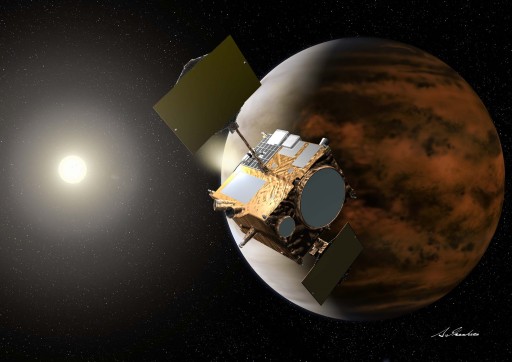
Orbiting Venus in an elliptical orbit provides Akatsuki with the ability to make very detailed observations when close to Venus and study dynamics on a global scale when at greater distance.
Akatsuki formally began science operations in May 2016, starting what is hoped to be a two-year science mission if the spacecraft’s systems can hold up after already exceeding their 4.5-year design life before arriving at Venus. The spacecraft is currently the only active spacecraft at Venus after Europe’s Venus Express burned up in the planet’s atmosphere in early 2015.
The spacecraft sets out study the dynamics of the atmosphere of Venus with particular interest in the upper atmosphere’s super rotation and the three-dimensional motion in the lower atmosphere, using a suite of six instruments comprised of five multi-band imagers covering the ultraviolet, visible and infrared wavelengths, and a radio science experiment.
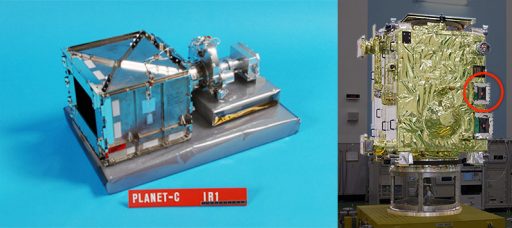
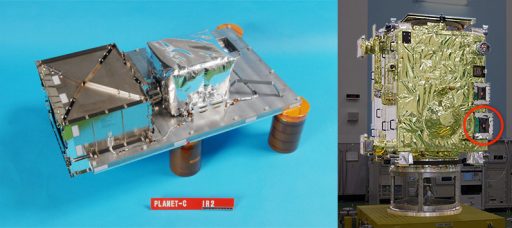
JAXA announced on Friday that Akatsuki was forced to suspend operation of two of its five cameras due to persistent electrical problems in the system responsible for controlling the cameras. The IR1 and IR2 cameras, each sensitive in four / five channels around the 1 and 2-micrometer wavelengths, were tasked with peering deep into the dense Venusian atmosphere down to the middle and lower atmosphere that is hidden from direct view by clouds.
Starting in early December, the electronics unit driving the IR1 and 2 cameras showed an erratic signature, drawing a higher current than would be expected during normal operation. Engineers began troubleshooting the problem on December 10 but were unsuccessful in restoring the cameras. On Friday, JAXA released a statement that operation of IR1 and 2 was suspended, however, occasional attempts will be made to restore power to the system and see whether the problem persists.
The suspicion among engineering teams is that the electronics unit fell victim to the much higher than planned radiation dose experienced as Akatsuki spent five years in hibernation while gearing up for its last-chance orbital insertion maneuver. JAXA hopes the problem is only localized and no sign of more radiation-related trouble in other areas of the spacecraft.
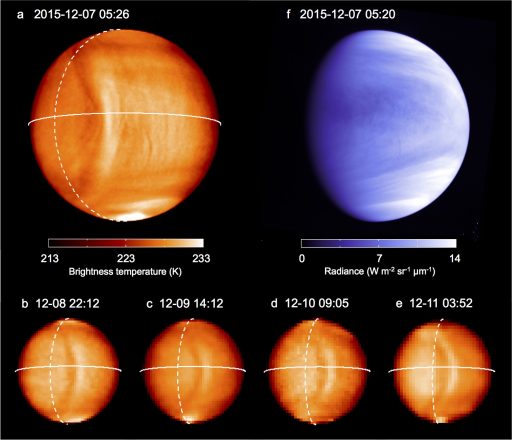
Despite its extended cruise through the solar system and less-than-ideal orbit, Akatsuki was able to deliver a number of new insights into the enigmatic Venusian atmosphere. Images from the probe revealed a gigantic wave in the atmosphere of Venus, possibly the largest such feature in the solar system measuring 10,000 Kilometers in length, almost spanning from pole to pole.
The bow-shaped wave was first imaged in December 2015 over the highlands of Aphrodite Terra and appeared to remain stationary for a period of four days which puzzled scientists since the planet’s atmosphere is known for its rapid cloud motion and jetstream in excess of 300 Kilometers per hour.
Scientists concluded the structure was the result of an atmospheric gravity wave generated in the lower atmosphere by the mountainous terrain and propagated upwards into higher atmospheric layers. Gravity waves can form on Earth when air blows over an obstacle like a mountain or island, but the wave observed on Venus was much larger than anything seen on Earth or elsewhere in the solar system.

As a feature extending from the lower atmosphere into the higher reaches, the gravity wave raised new questions on the conditions near the scorchingly hot surface of Venus. Previously, it was hypothesized that winds in the lower atmosphere were much lighter than the atmospheric super rotation seen higher up. However, the existence of a transient gravity wave points to more variable conditions in the lower atmosphere. Akatsuki’s infrared cameras played a major role in observing the feature when it first appeared and again looked for it in January 2016 when it had already disappeared. The IR cameras also observed Super-Rotation Vortex, a local atmospheric phenomenon with top wind speeds of 360 Kilometers per hour.
Now down two instruments, Akatsuki will continue observations for as long as possible. JAXA said the spacecraft is generally in good health and all remaining instruments are up and running to study high and low-altitude cloud patterns, measure the distribution of water vapor and carbon monoxide, and image the surface of the planet in the search of active volcanoes. Sulfur dioxide, a precursor to cloud formation, will be mapped with the ultraviolet imaging system and radio waves sent from Earth will be directed through the atmosphere to study its structure by looking at changes introduced into the signals.

